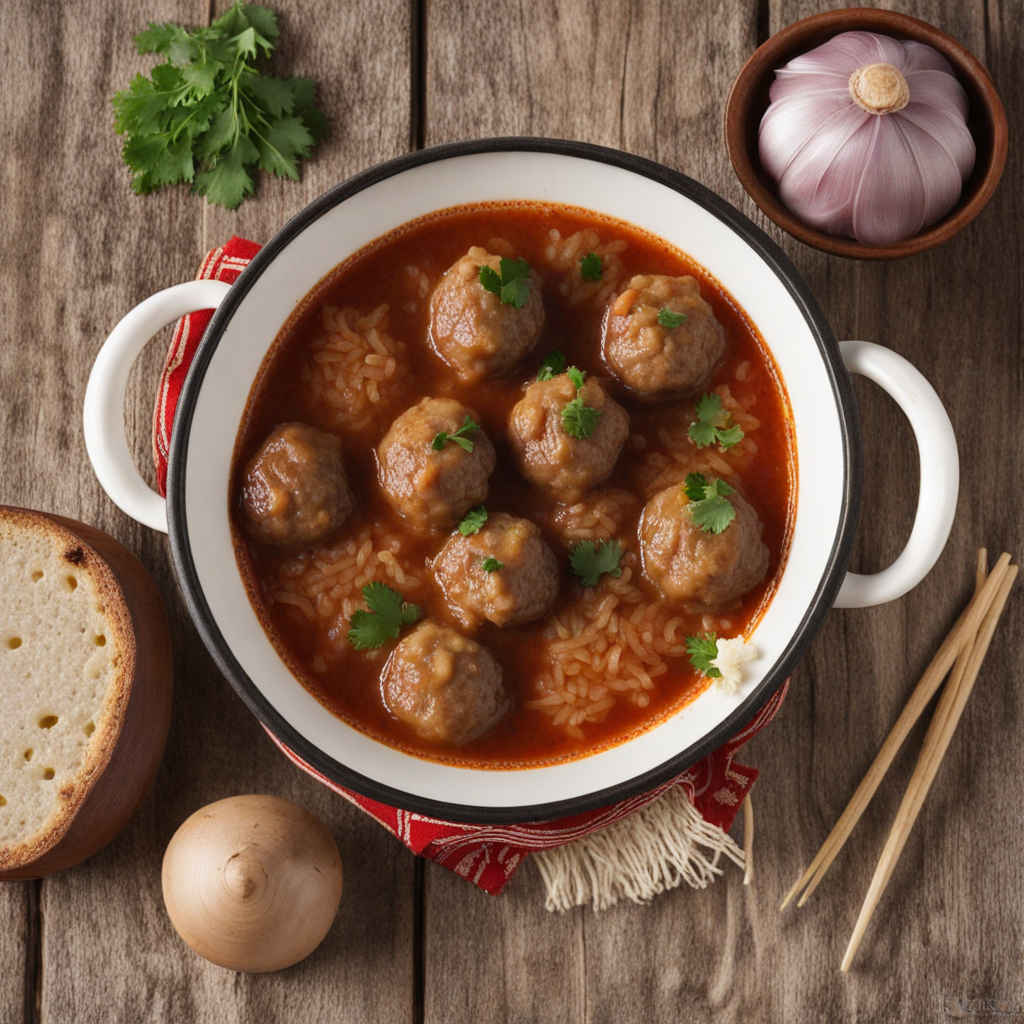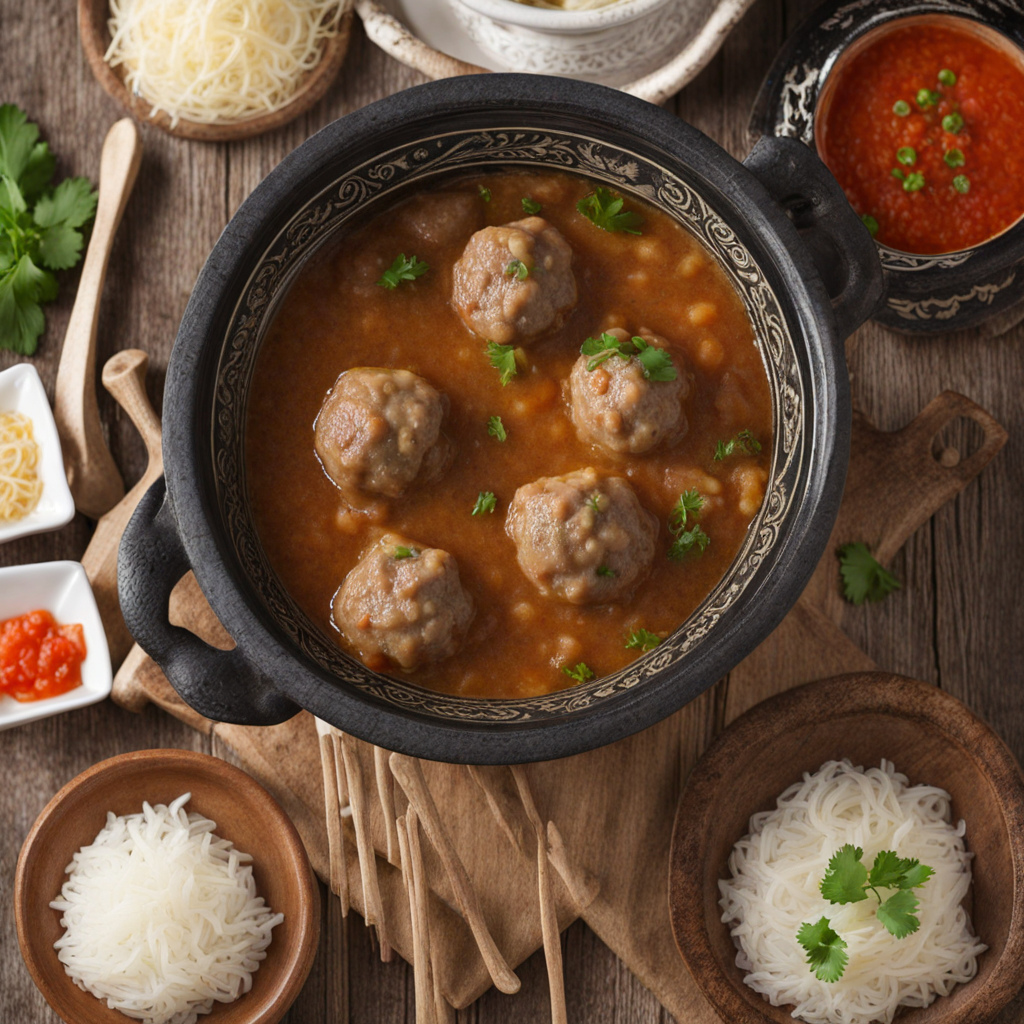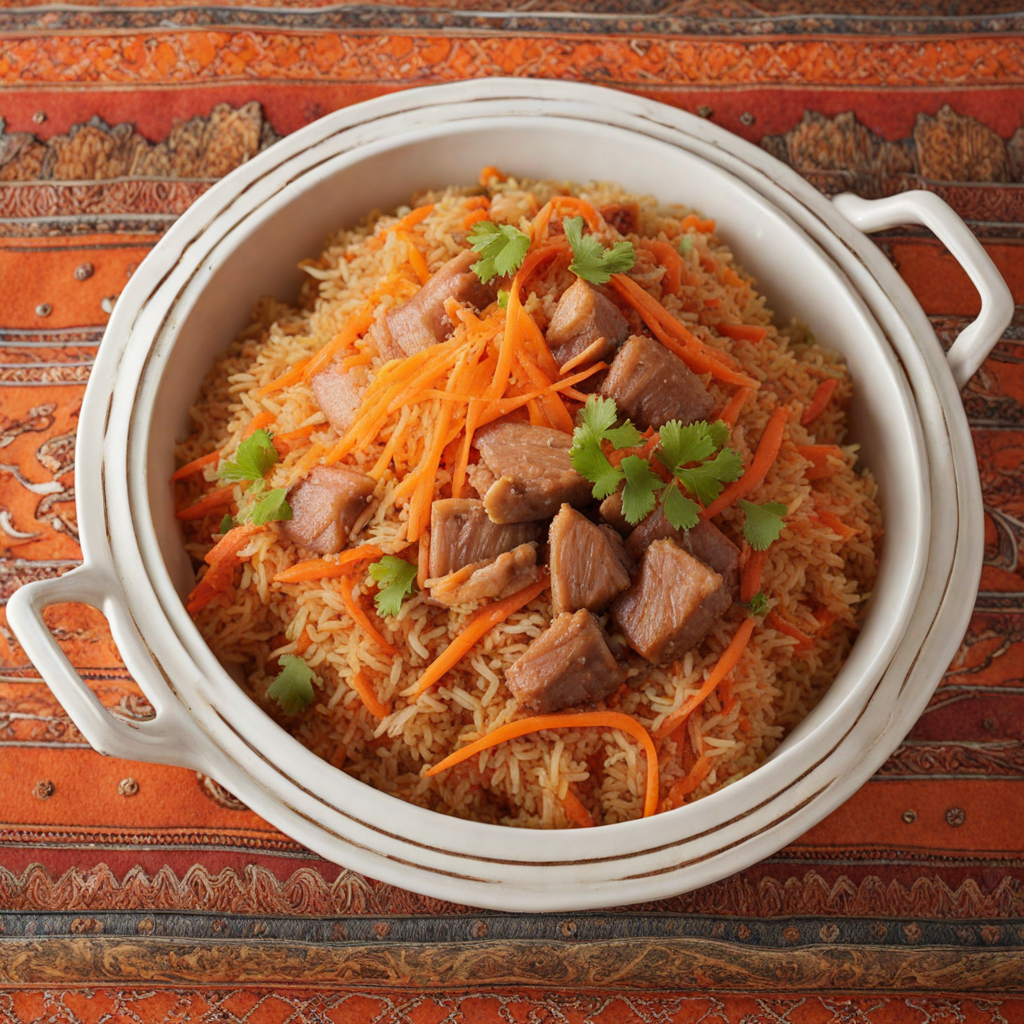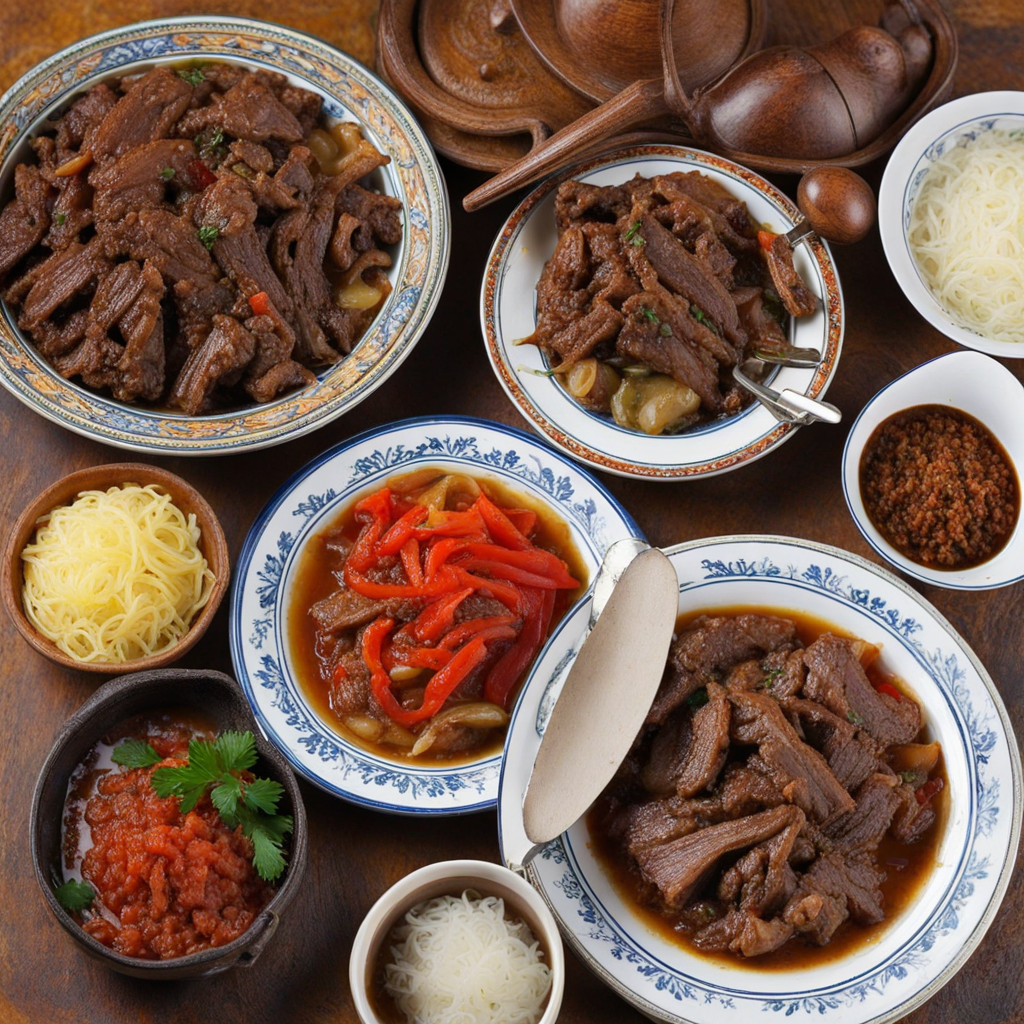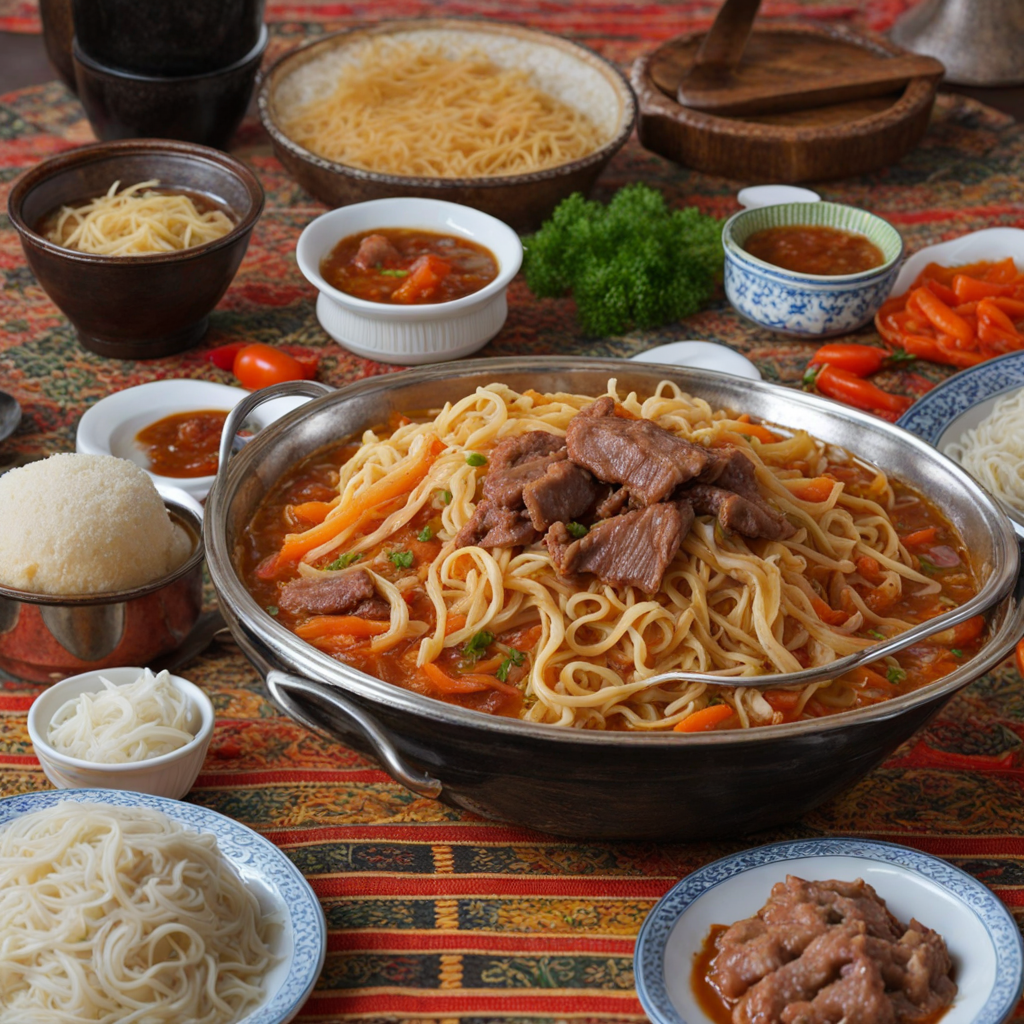Bal Makh
Бал-Мах, a traditional dish from Kyrgyzstan, embodies the rich culinary heritage of the region, showcasing the nomadic lifestyle and the natural resources available in the mountainous terrain. This dish is primarily made from lamb or beef, seasoned with a blend of spices, and is known for its hearty and robust flavors. The term 'Бал-Мах' translates to 'meat with fat', which reflects its origins in a culture that relies on the consumption of protein-rich foods, particularly during the harsh winters. The history of Бал-Мах is deeply rooted in the nomadic traditions of the Kyrgyz people, who have historically relied on livestock for sustenance. As herders, they would utilize every part of the animal, and Бал-Мах is a prime example of this resourcefulness. The dish likely developed as a way to preserve meat while enhancing its flavor, serving as a staple for families during long journeys across the steppes. Over the years, it has evolved into a beloved dish often prepared for special occasions and gatherings, symbolizing hospitality and abundance. In terms of flavor, Бал-Мах is characterized by its rich, savory profile. The primary ingredient, meat, is cooked slowly to ensure tenderness and to allow the spices to meld beautifully. The addition of fat, often from the lamb or beef, contributes to the dish's luxurious mouthfeel and depth of flavor. The spices used—typically including black pepper, cumin, and sometimes a hint of garlic—enhance the natural taste of the meat
How It Became This Dish
Origin of Бал-Мах Бал-Мах, a traditional dish from Kyrgyzstan, has its roots deeply embedded in the nomadic culture of the Central Asian steppes. This dish, which translates roughly to "sour milk and dough," reflects the pastoral lifestyle of the Kyrgyz people, who historically relied on livestock for sustenance. The ingredients of Бал-Мах are simple yet nourishing, primarily consisting of fermented dairy products such as kymyz (fermented mare's milk) and sour cream, combined with various types of bread or dough. The use of fermented dairy is not only a culinary choice but also a practical one, as it helps preserve milk in the absence of refrigeration, a necessity in the harsh climates of Kyrgyzstan. The origins of Бал-Мах can be traced back to the ancient traditions of nomadic tribes in the region. The Kyrgyz people, along with other Central Asian nomads, developed their culinary practices based on the availability of local ingredients and the needs of a mobile lifestyle. The dish embodies the resourcefulness of these communities, who utilized their livestock not just for meat but also for various dairy products, which are rich in nutrients and vital for survival in the arid climate. Cultural Significance Бал-Мах is more than just a staple food; it plays a significant role in the cultural identity of the Kyrgyz people. It is often served during festive occasions, family gatherings, and traditional celebrations, symbolizing hospitality and the warmth of Kyrgyz culture. The preparation and sharing of Бал-Мах is a ritual that brings families and communities together, reinforcing social bonds and cultural traditions. In Kyrgyz society, food often serves as a medium for storytelling and the transmission of wisdom. When Бал-Мах is served, it is accompanied by stories of the past, tales of ancestors, and discussions about the cyclical nature of life in the steppes. The dish also reflects the values of sharing and generosity, as it is commonly offered to guests as a sign of respect and welcome. Ingredients and Preparation The primary ingredients of Бал-Мах highlight the reliance on locally available resources. Fermented dairy products are central to the dish, with кymyz being particularly significant. This beverage is not just a source of hydration but is also revered for its health benefits, including probiotics that aid digestion. The dough component, often made from wheat or barley flour, is mixed with the dairy to create a thick, hearty consistency that can sustain the nomads during their travels. Preparation of Бал-Мах can vary by region and family traditions, but it generally involves a few simple steps. The dough is kneaded and allowed to ferment slightly before being combined with the fermented milk. The mixture is then left to rest, allowing the flavors to meld together. Depending on personal preference, some might add sweeteners like honey or fruits for additional flavor, showcasing the adaptability of the dish to contemporary tastes. Evolution Over Time As Kyrgyzstan underwent significant social and political changes in the 20th century, so did its culinary landscape. The Soviet era introduced new food production methods and ingredients, impacting traditional dishes, including Бал-Мах. While the core ingredients remained the same, the availability of processed foods and the influence of other Soviet republics began to alter the way Бал-Мах was prepared and enjoyed. During this period, urbanization led to a decline in traditional nomadic lifestyles, resulting in a shift in eating habits and food preparation techniques. Despite these changes, Бал-Мах has seen a resurgence in interest in recent years, particularly among younger generations who are eager to reconnect with their heritage. Efforts to preserve traditional recipes and cooking methods have sparked a revival of interest in Kyrgyz cuisine, leading to the reintroduction of Бал-Мах in both rural and urban settings. Culinary festivals and cultural events often feature this dish, promoting awareness of Kyrgyz food traditions and their significance in the broader narrative of Central Asian culture. Contemporary Relevance In today's world, Бал-Мах continues to symbolize the resilience and adaptability of Kyrgyz culture. As global culinary trends shift towards simplicity and authenticity, the dish stands out as a representation of wholesome, traditional food practices. Many Kyrgyz restaurants, both within the country and abroad, have begun featuring Бал-Мах on their menus, promoting it as a unique offering that encapsulates the essence of Kyrgyz hospitality. Moreover, with the rise of interest in fermented foods globally, Бал-Мах has found a new audience. As people become more health-conscious and curious about gut health, the probiotic-rich nature of the fermented dairy in Бал-Мах aligns perfectly with current dietary trends. This modern appreciation serves to bridge the gap between tradition and contemporary culinary practices, ensuring that Бал-Мах remains a relevant and cherished dish in Kyrgyz culture. Conclusion In essence, Бал-Мах is much more than a food item; it is a cultural artifact that encapsulates the history, values, and traditions of the Kyrgyz people. As it continues to evolve while retaining its core attributes, Бал-Мах serves as a testament to the enduring spirit of the Kyrgyz culture. Whether enjoyed in a traditional yurt during a family gathering or served in a modern restaurant, this dish connects generations and tells a story of resilience, community, and identity in the heart of Central Asia.
You may like
Discover local flavors from Kyrgyzstan


